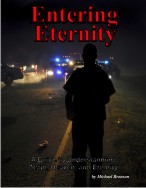






| Website Stats |
Visits from over |
|
Free downloads |
You can now read the material from this website on most electronic devices: -On your computer
Two NEW books from the author of BibleHelp
|

Important Note
This section on selective salvation is 66 chapters long. If you arrived at this page via an Internet search engine, you might want to start with the first chapter. This will provide you a complete presentation of this subject.
Click Here to go to the first chapter
Click Here for a quick summary
Click Here to view all 66 chapters
Click Here to download a book version of this study
Chapter: 14.34
(Section 14: Selective Salvation)
Copyright © Michael Bronson 1998 - 2005
BibleHelp.org
As I mentioned earlier, statistics are not consistent with the doctrine of selective salvation. Instead of being a random mix of believers all around the world, there are vast areas with high concentrations of believers and other areas with very low concentrations of believers.
This is totally inconsistent with what you would expect with selective salvation. This is, however, what you would expect from open salvation. In fact, if open salvation is true, you would expect areas that have a high concentration of strong believers will have a high growth of new believers and areas with few or no believers will have little or no growth of new believers. This is exactly what we find.
For example, there have been some tribes in the heart of Africa that have not had any Christians for thousands of years. Yet, after missionaries have been there for about 10 years, 80% of the population had accepted Christ as their Savior. (Of course, many tribes respond to the gospel slower because of their religious and cultural background.) Although a sovereign God can do whatever He wants, it just seems unlikely He would not have "elected" anyone from a tribe for thousands of years and then "suddenly" elect 80% of them. These statistics are consistent with what you would expect to find with open salvation.
The Bible must always be our final authority. Therefore, these statistics do not disprove selective salvation. Yet, if our observations clearly contradict a doctrinal position, we need to reevaluate the legitimacy of the doctrine.
Other Chapters in this Section
Home
Up
PART 1: What is Selective Salvation?
PART 2: What Does the Bible say about Selective Salvation?
PART 3: Problems with Selective Salvation
How do you KnowYou are Saved?
Are We Lying when We are Witnessing?
Children of the Elect
Statistics do not Support Selective Salvation
Why are there so Many Religions?
Can We Resist God's Call to Repentance?
Can We Seek the Lord?
Why was Hell Created?
Has God Really Selected People at Random to go to Hell?
Why did the Reformation take place?
PART 4: “Choice” –The Achilles’ Heel of Selective Salvation
PART 5: Difficult Questions Answered
Appendix: Foundational Documents used by Selective Salvationists

